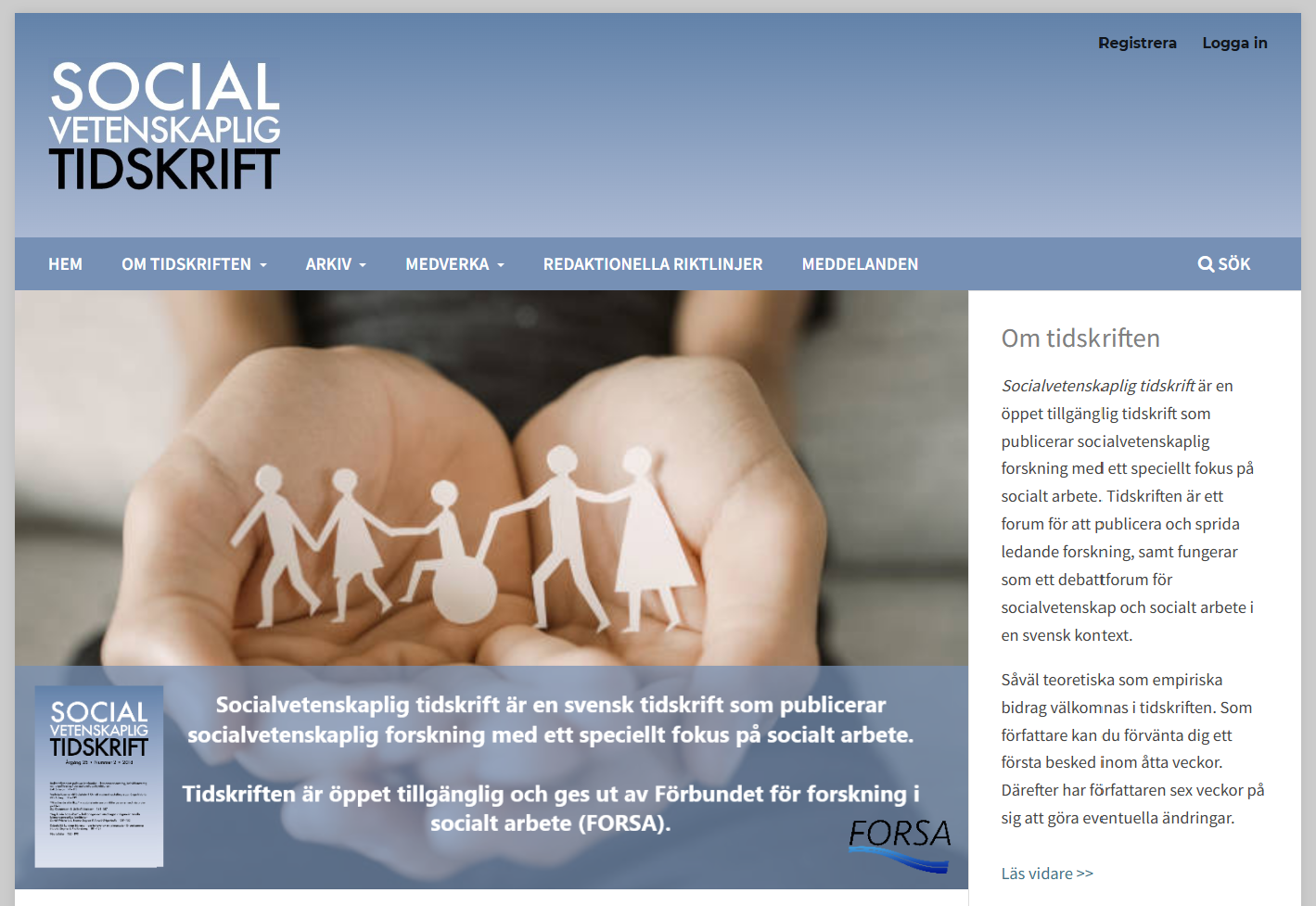Utveckling av svensk välfärd under ett kvartssekel 1994–2019
DOI:
https://doi.org/10.3384/SVT.2019.26.3-4.3087Abstract
The development of welfare and welfare policy in Sweden 1994–2019
Sweden is a country with a high standard of living, relatively small income differentials and a well-developed welfare system. However, that does not mean that there are no problems. The development of the economy, labour market and welfare in Sweden has been dramatic in several respects over the last quarter of a century. The variations in economic development have been considerable during this period, which has had an impact on the labour market, not least for groups such as young people who have not completed high school studies and newly arrived refugees. Also important is the increase of immigration because of the expansion of the EU but also of refugees. The economic development has affected various individuals and groups in different ways. Economic development has also had an influence on the development of the different parts of the welfare system. There have been several changes in the social policy programmes. Privatization of parts of the sector is one important change. This chapter outlines the main features of this development in different areas of the economy, the labour market and the welfare system in Sweden.
Downloads
Published
How to Cite
Issue
Section
License
Allt material i Socialvetenskaplig tidskrift publiceras sedan 2022 (Vol 28 Nr 2) med omedelbar öppen tillgång (open access), under Creative Commons-licensen CC BY 4.0. Upphovsrätten till innehållet tillhör respektive författare.
Allt innehåll i tidskriften är fritt tillgängligt utan kostnad och får fritt läsas, laddas ned, kopieras, delas, skrivas ut och länkas. När innehållet används måste författare, källa och licens anges. Författaren kan fritt göra sin publicerade text tillgänglig på institutionella och internetbaserade arkiv, exempelvis sitt lärosätes digitala arkiv eller andra tjänster för detta.
Inga publiceringsavgifter tas ut vid publicering i Socialvetenskaplig tidskrift.


